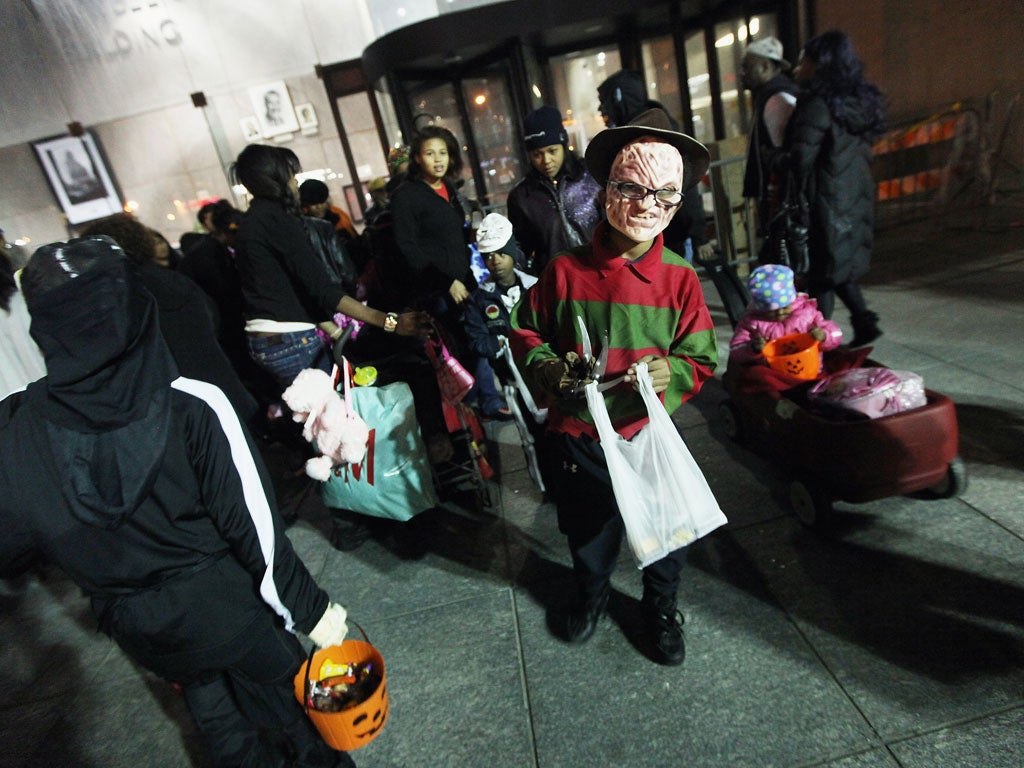The Halloween poisoner has US in his grip
A new study casts doubt on an urban legend, but the myth of the deadly candy refuses to die

It's a headline-writer's dream, and every parent's worst nightmare. But if history is any guide, the likelihood of America's young trick-or-treaters being harmed this week by a homicidal maniac who poisons Halloween "candy" is nonexistent.
For decades, parents have been warned to check sweet-wrappers for signs of tampering, chocolate bars for hidden needles, and apples for surreptitiously inserted razor blades when their children return home from knocking on strangers' doors. But Dr Joel Best, a sociologist and criminologist at the University of Delaware, has researched every reported case of so-called "Halloween sadism" in the past 45 years, and has concluded that not one of them was genuine.
"I can't find any evidence that any child has ever been injured by a contaminated treat picked up on Halloween," he told The Independent on Sunday. "I can't say for certain that it hasn't happened, because it's impossible to prove a negative. But this seems to be an urban myth."
Dr Best has discovered 90 cases of alleged poisoning reported by newspapers or hospitals since 1958 but he says that none can be attributed to random attempts to harm kids. Most are pranks by children seeking attention; some are murkier attempts by parents to gain compensation.
The most famous case was that of Ronald Clark O'Bryan, dubbed the Candyman, who in the mid-1970s reported that his eight-year-old son had been killed by a cyanide-laced Pixie Stix bar while trick-or-treating near his Texas home. Police later discovered that Mr O'Bryan had taken out a $20,000 insurance policy on his son's life. In a case that garnered international attention, he was convicted of murdering the child, and executed by lethal injection.
Dr Best says that four other infant deaths have been attributed to "Halloween Sadism" over the years. In three of the cases, the reports were later withdrawn. In the fourth, the child had accidentally ingested his uncle's supply of heroin. "Despite this," he says, "people seem to think it's very common. In the Candyman case, I think that was why O'Bryan thought police would believe what they were told and that he'd be able to get away with it."
The myth picked up speed in the late 1960s, as the popularity of Halloween also increased. At the time, many Americans apparently believed that hippies might get a kick from adding LSD to the sweets of unsuspecting children.
The phenomenon peaked in 1970 and 1971, when there were 10 and 14 reported incidents respectively. There was another mini-peak in 1982, when 12 alleged cases occurred. None have ever been confirmed, but the myth of "Halloween Sadism" nonetheless endures. Over the years, America's National Association of Confectioners, for whom 31 October is crucial, have attempted to persuade the nation that trick-or-treating is safe. But Dr Best's research, which has informed a book called Threatened Children, leads him to believe they face an uphill struggle.
"When you think about it, the whole concept just doesn't add up. But there's clearly something that makes people believe in a homicidal maniac who is so crazy that he will poison kids for no reason at all... but only do it on one day of the year."
Join our commenting forum
Join thought-provoking conversations, follow other Independent readers and see their replies
Comments
Bookmark popover
Removed from bookmarks